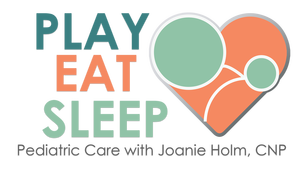|
Prairie Doc® Perspectives week of August 28th, 2022
Aspirin: Is it right for you? By Phillip Meyer, M.D. For most people, taking a daily 81 mg aspirin to prevent stroke and heart attack is more risky than beneficial. Aspirin has been in use as a pharmaceutical for over 150 years making it one of our oldest. One might assume with all this experience we would know exactly how to use it, but today’s recommendations are based on better evidence gained from better science. Originally used to treat pain, aspirin evolved to become a cornerstone for cardiovascular protection after compelling research in the 1970s. By the 1980s, it was recommended that almost anyone over the age of 50 take an 81 mg aspirin daily because it makes your blood clotting cells “slippery” thus helping prevent clots from forming in the arteries of your brain and heart. Even at the low 81 mg dose, bleeding is aspirin’s most common side effect. Physicians have long accepted this risk, however, as multiple large scale research studies have established this risk as low and outweighed by its great benefits. This risk vs. benefit relationship has been called into question by more recent research leading to the recommendation several years ago that only those at highest risk of stroke and heart attack should take a daily aspirin. This includes people with Diabetes, Hypertension and those who have had a stroke or heart attack in the past as well as those who have stents in their coronary or other arteries. Research published in the April 2022 issue of the Journal of the American Medical Association is a game changing analysis confirming the benefits of aspirin are indeed outweighed by the risk of bleeding, specifically among those who have never suffered a stroke or heart attack nor have a vascular stent. One out of every 250 people in this category taking a daily 81 mg aspirin for ten years successfully prevented a stroke or heart attack but one out of 200 suffered a major bleeding event. In an update to their 2016 recommendations, The U.S. Preventative Services Task Force now discourages using aspirin for the primary prevention of stroke and heart attack in adults older than 60. To clarify, those who have had a previous stroke or heart attack and/or have a vascular stent, benefit greatly from a daily aspirin and this benefit outweighs the risk of bleeding. There are exceptions to every rule and guideline so please, as always, consult your personal physician regarding your unique situation and use of aspirin. Philip Meyer, D.O., is a contributing Prairie Doc® columnist. Dr. Meyer has been practicing General Internal Medicine and Hospital Medicine in Pierre since 1997. Currently Dr. Meyer practices outpatient Internal Medicine at the Pierre VA clinic where he also serves as the medical director. In addition, he is an Associate Clinical Professor for the Sanford School of Medicine and the University of South Dakota Physician Assistant Program. Follow The Prairie Doc®, based on science, built on trust, at www.prairiedoc.org and on Facebook featuring On Call with the Prairie Doc® a medical Q&A show streaming live on Facebook broadcast and on SDPB most Thursdays at 7 p.m. central. Back to school with allergy and asthmaBy Mark E. Bubak, M.D.
For students with allergies and asthma, back to school means more than getting their backpacks filled with paper, pencils, and any needed odds and ends. Keeping your child safe and healthy involves creating a proactive plan to be implemented both at home and at school. Allergy doctors refer to these plans as “control programs” because the goal is prevention and control. Food allergies can cause anaphylaxis, the total body allergic reaction with shortness of breath, hives, low blood pressure, vomiting, diarrhea, and potentially death. Avoidance is the treatment. If an accident happens and the student starts to react, it is imperative that epinephrine is given and the student is taken to the emergency room for ongoing care. A local, itchy reaction can occur if the allergic student touches the food and the more serious reaction, anaphylaxis can occur if the food is eaten. Children diagnosed as asthmatics tend to have more frequent issues than food allergic children. Like food allergies, prevention is key. Therefore, the student should take any daily prevention medications at home prior to going to school. Students with allergy eyes and noses should also take their medications before they leave for school to minimize symptoms. If they continue to have symptoms, it is time to see the doctor. Asthmatics need ready access to a rescue medication such as albuterol to use when they develop their cough, wheeze, or shortness of breath. While at school, students can use their inhaler before strenuous exercise to prevent an attack. A control program should spell out what to do if the inhaler does not work. Most often this will trigger a call to the parents. If the attack is severe, it could mean getting the student to an emergency room. Most asthma flares are triggered by viral infections. Getting the flu shot can reduce the odds of a flareup and staying home during a flareup may be best. Parents and guardians, be sure to prepare your child’s control program before school starts and share it with the school team. Make sure the student’s medications are present and ready to go. Have the school forms completed by the student’s doctor and remember to get that doctor appointment scheduled early. Talk with your child so they know what to do. Students with allergy and asthma can expect to fully participate in virtually all school activities including gym class and sporting events. If they are having symptoms, it means the control program needs to be improved and participation continued. Having the entire team ready is the best way to feel good about sending your children back to school. Working together results in happy, confident, successful students and proud parents! Mark E. Bubak, M.D. is a contributing Prairie Doc® columnist. He is a board-certified allergist with a practice based in Sioux Falls, South Dakota. Follow The Prairie Doc®…based on science, built on trust, at www.prairiedoc.org and on Facebook featuring On Call with the Prairie Doc® a medical Q&A show, broadcast on SDPB and streaming live on Facebook most Thursdays at 7 p.m. central. Health promotion and personal safetyBy Debra Johnston, M.D.
|
Archives
July 2024
Categories |
 RSS Feed
RSS Feed


